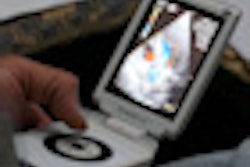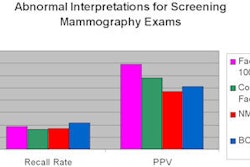CHARLOTTE, NC - The Society for Imaging Informatics in Medicine (SIIM) has thrown its support behind efforts by the World Health Imaging Alliance (WHIA) to deliver digital imaging systems to developing communities across the world.
The two organizations unveiled their alliance on Thursday at SIIM's annual meeting. SIIM appointed former board member George Bowers, principal at Health Care Information Consultants in Baltimore, to serve as liaison to the WHIA, as the two groups identify specific initiatives on which to collaborate.
One option may be to help raise "Third World operators of [imaging] equipment to the level where they can run the equipment efficiently and maintain it. Perhaps there might be a role for how we can help them acquire the devices or specify what devices can work there," said Dr. Bradley Erickson, Ph.D., chair of SIIM's board of directors. "We haven't worked out all the details, but we want to send a clear message that SIIM is supportive of this organization."
One definitive plan is for Janice Honeyman-Buck, Ph.D., editor in chief of the Journal of Digital Imaging, to assist the WHIA in editing "Diagnostic Imaging in the Community: A Manual for Clinics and Small Hospitals."
The WHIA field guide will target nonradiologists and technicians who operate imaging devices on how to "produce the highest quality diagnostic images," said WHIA CEO Ivy Walker. "It also focuses on the simple maintenance that needs to be done to make sure the machines keep operating."
Worldwide need
According to the World Health Organization (WHO), two-thirds of the world's population has little or no access to basic diagnostic x-ray services. Imaging services are needed in cases of trauma and infectious disease, such as tuberculosis and abdominal conditions. Without imaging services, "many treatable conditions can prove to be debilitating and even fatal," Walker said.
More than 20 years ago, the WHO developed specifications for an inexpensive x-ray system, known as the World Health Imaging System for Radiology, or WHIS-Rad. The system can produce high quality x-ray images, Walker said, even when used by healthcare professionals with limited experience.
The WHO estimates that only 1,500 WHIS-Rad units have deployed worldwide, compared with an estimated worldwide need of approximately 80,000 systems. "Of the approximately 1,500 machines deployed, it is estimated that less than half remain in operation today," she added.
While there are many reasons for this situation, Walker said the main reason is the lack of planning for ongoing maintenance and support for the systems to keep them operating.
WHIA targets
Although the greatest worldwide need in developing nations is for ultrasound and x-ray technology, the WHO estimates that approximately 90% of all imaging performed in the developing world can be handled by x-ray. Walker said the WHIS-Rad system, for example, is designed to image bones, the chest, hands, and extremities and can scan the heart, if necessary, as well.
"The primary targets for the x-ray systems are first-referral hospitals, but we are also working with, for example, an urban clinic in Guatemala," which is a pilot site, she added. "They have requests for 50 to 100 x-rays per day and they currently don't have a system, so they refer [patients] to the public hospital, which does x-rays from 6 a.m. to 6 p.m. and has lines out the door."
The WHIA currently has pilot sites in South Africa and Guatemala and is seeking to identify new qualified sites, including some 50 locations in Guatemala.
By Wayne Forrest
AuntMinnie.com staff writer
June 5, 2009
Related Reading
Digital technology sparks revival of global x-ray project, April 15, 2009
World Health Imaging launches global mission, April 6, 2009
In a spirit of giving: Medical donations make a difference, November 21, 2006
All hands on deck: How radiological staff can help on hospital ships, November 21, 2006
Siemens makes multimillion-dollar donation to Clinton initiative, September 21, 2006
Copyright © 2009 AuntMinnie.com



















